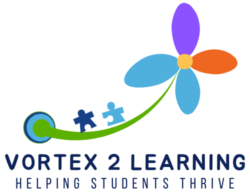Effective self-regulation strategies and tools can enhance social-emotional learning in the classroom. Implementing a program or system for emotional self-regulation can contribute to this. Thus, studies have found that schools that prioritize social-emotional learning can benefit both teachers and students.
SEL involves developing emotional awareness to understand and manage one’s own feelings and recognizing and addressing them in others. This helps improve communication and benefits everyone involved.
Having SEL programs and systems in place helps students and teachers build more trusting and collaborative relationships. In fact, studies show that students become better communicators, build stronger identities and become better decision makers.
Social Emotional Learning Makes A Difference
Marc Brackett, is the director of the Yale Center for Emotional Intelligence. He serves on the board of the Collaborative for Academic, Social and Emotional Learning (CASEL). Additionally, he is the lead developer of RULER— an evidence-based approach to social and emotional learning. RULER is an acronym for the five skills of emotional intelligence (recognizing, understanding, labeling, expressing, and regulating). According to CASEL, “an education that promotes SEL has a positive impact on a wide range of outcomes, including academic performance, healthy relationships, mental wellness, and more.”
In Brackett’s book, Permission To Feel (*affiliate link) we discover that our emotions, not cognition, control attention, focus, and memory. This has significant implications for the classroom because when students can identify, label, and understand their emotions, they can use strategies to regulate them, which can improve academic and behavioral outcomes.
Self-Regulation Toolkit
I’ve created these low prep social emotional learning tools and calming strategies to help your students self regulate better. They will be able to identify their feelings and emotions, learn different coping skills and self regulations strategies. They will also learn to communicate and express their feelings more appropriately and find the equilibrium needed to overcome obstacles in their day.
Feelings/Emotions/Behavior Flashcards
Included in this resource are 16 emotions flashcards to identify and label emotions. The flashcards have been color coded to group a range of emotions that have similar characteristics. For example, The goal would be to have students work through their emotions to bring them to the green level where the range is (happy, joyful, feeling good and calm).
To clarify, we aim for the “green” zone as it is the most conducive for learning, but it’s important to acknowledge and respect the child’s emotional state regardless of where they are on the spectrum.
Self Regulation/Coping Skills Cards
Downloadable are 16 self-regulation cards containing calming strategies for students to practice and use. These cards can be laminated and placed on key rings, then kept in the cool down areas of the classroom or given to each student for easy access. These cards are particularly helpful for students who have frequent behavioral incidents and can be incorporated into a student’s behavior or social plan to aid in reducing undesired behaviors and increasing desired behaviors.

These self-regulations cards are also color coded to work with the feelings/emotions flashcards. The strategies are to be used with the emotions that surface on the corresponding flashcards of the same color. There are 4 strategies per emotion to choose from.
Self Management Skills Posters
These posters combine emotions and coping strategies, making them perfect for your classroom’s calming or SEL area. Your students can use them as a reference or model to practice self-regulation skills. With four different strategies to choose from, they will be able to find the one that works best for their current emotional state. These posters will help you empower your students with choices and a tools to help them manage their emotions.

Differentiated Feelings and Emotions Boards With Symbols
The toolkit for emotional self regulation includes “My Feelings Boards” for identifying and expressing feelings, symbols with real pictures for real life connection, and word symbols for fluent readers. It also includes a choice board home page for storing symbols and a pinwheel with 8 more coping strategies for students to learn and practice.


This Self Regulation Coping Skills Toolkit Is Great For:
- K-5 elementary school students
- Students with disabilities
- Students on the autism spectrum (grade clusters K-2 & 3-5)
- ESL, EFL, ELL, ELD Learners
- Students with Language Impairments
- Reluctant Readers and Writers
- Mixed Grade Classrooms
- At risk kids
- Students with ADD, ADHD
- Homeschool Learners
Standards Addressed: New York State Social Emotional Learning Benchmarks (NYSSEL)
Early Elementary K-3:
1A.1a. Recognize and describe emotions and how they are linked to behavior. 1A.1b. Demonstrate control of impulsive behavior.
Late Elementary 4-5:
1A.2b. Describe and demonstrate ways to express emotions in a constructive manner. 1A.2c. Demonstrate control of behaviors that interfere with time on task.
This tool is simple to incorporate in your classroom and allows for creativity in its usage. The color-coded components make it easy to identify intense and problematic emotions, with the red ones requiring more immediate attention. Encouraging students to regulate themselves to a green state, which is optimal for learning, focus, and attention, is the ultimate goal.
The toolkit emphasizes five essential skills: recognizing, understanding, labeling, expressing, and regulating emotions. These skills enable students to manage their emotions effectively and promote self-regulation.
Additional Resources and Materials
If you are looking for a lesson on feelings and emotions for your nonverbal students, student on the spectrum or K-1 elementary students, you may like this one. You may also like Self-Regulation: Social Stories, Calming Strategies, Break Cards, and Checklists to help your students self-advocate.
I’d like to invite you to come join the vortex 2 learning club and gain exclusive access to the freebie library of resources— a growing collection of educational lessons, activities, worksheets, workbooks and more.



